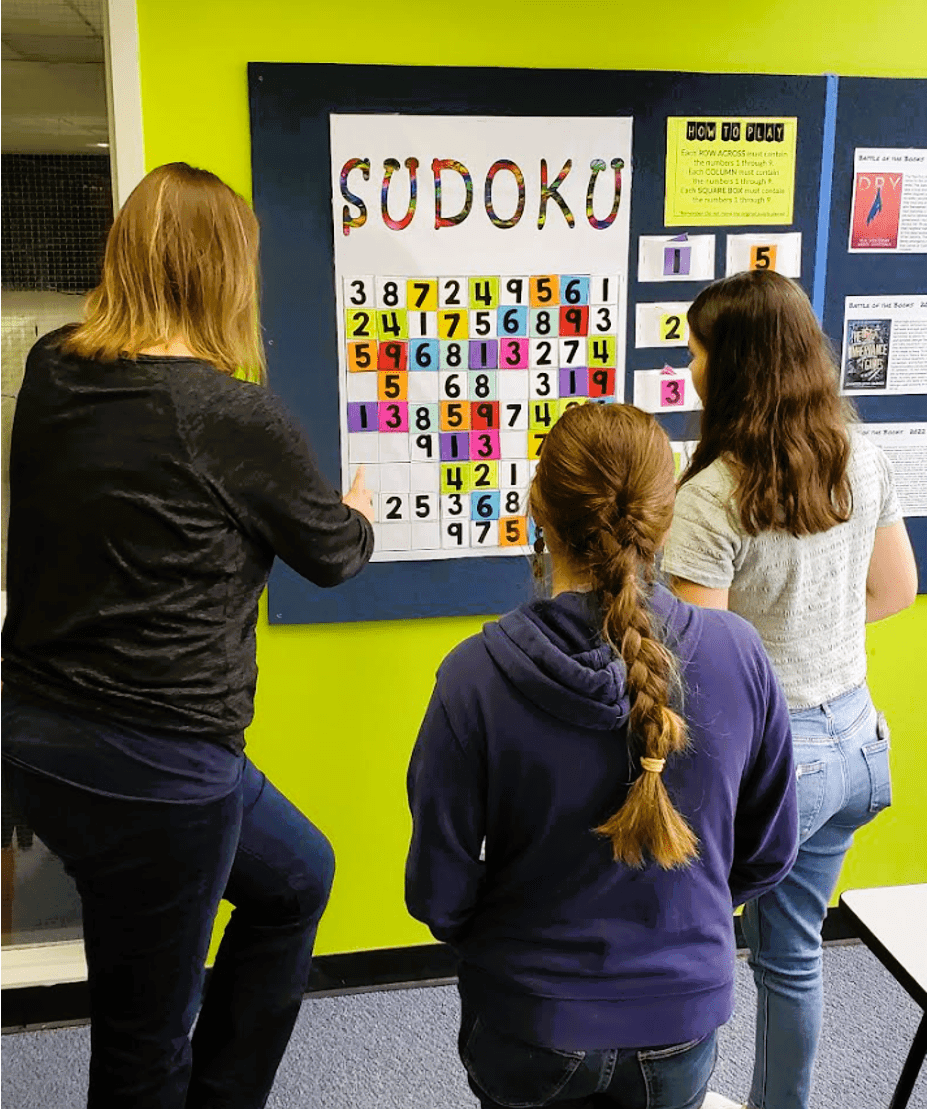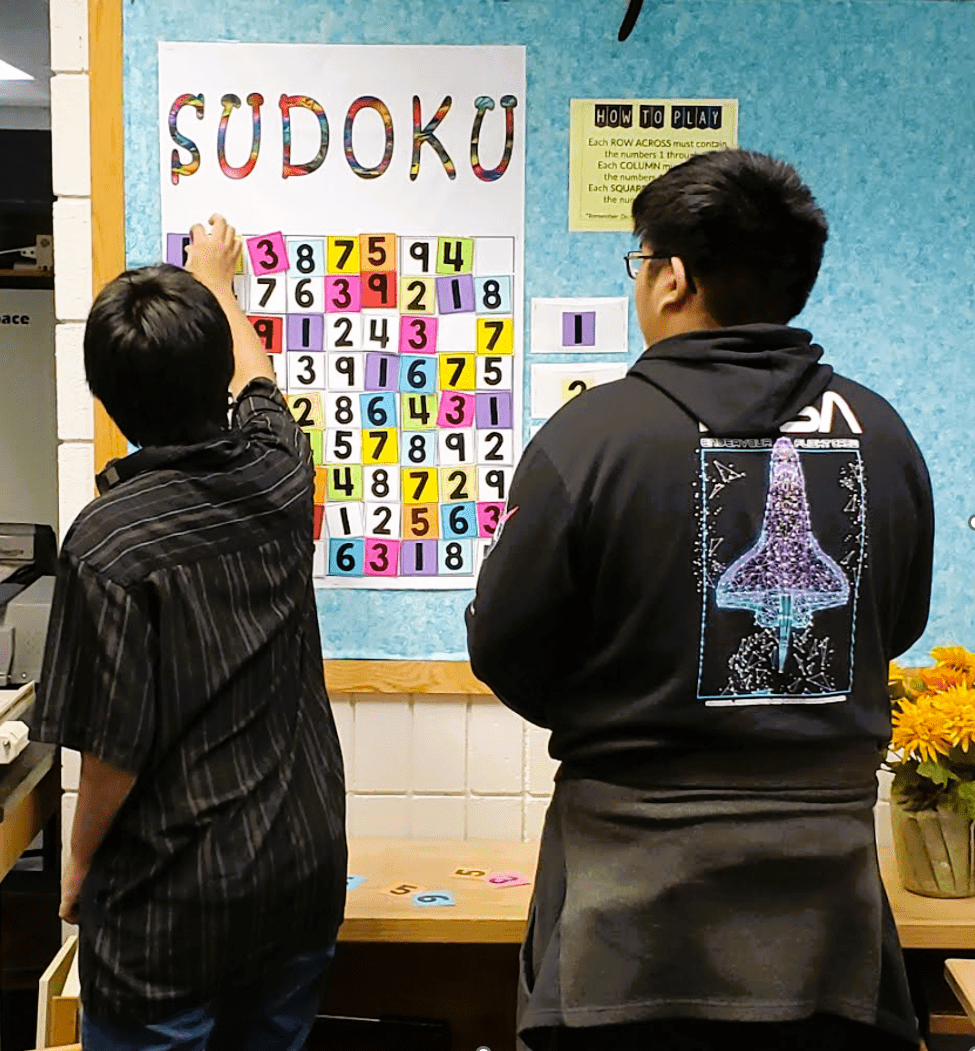The updated Alaska school library standards are not just about books. They are based on the six foundations of Inquire, Include, Collaborate, Curate, Explore and Engage. Some or all of these foundations can apply to and enhance ALL educational experiences, including the Sudoku board found in the Valdez High School Library.
VHS Library Associate Pamela Verfaillie was approached by math teacher Rachel Hamilton, thinking that she might be interested in a giant Sudoku board (seen on Teachers Pay Teachers). Mrs. Hamilton was right. They purchased one of the available TpT Sudoku kits and created a 2’x3’ station in the library. It is frequently in use and puzzles sometimes need to be changed out more than once in a day (it is set up so students can do that themselves).

The first thing an observer might notice is that students, and sometimes staff, work on the puzzles together. They COLLABORATE – sometimes in person, other times people are working on the same puzzle at different times and they have to figure out what changed while they were gone. Puzzle solvers often have different learning styles, abilities, or approaches. Do you start with lines, columns, boxes, or specific digits? Some might not even know the rules to Sudoku and might need help figuring out where the numbers go. Students INCLUDE others who are different from themselves. And, we see them EXPLORE – problem solving and revising as they find solutions and correct mistakes made along the way.

There have been instances when some students have become frustrated with wrong number placement, but those can turn into great discussions about helping other students better understand how to play the game. One student in particular was randomly placing numbers on the board, frustrating others. When students were upset, Mrs. Verfaillie suggested that instead of yelling at him, they could show him how it works. Now, that student has become a ‘go to’ person to find errors in the puzzle.
Sudoku in the library promotes the library standards, real world connections, and problem-solving strategies that we want for our students.
The board was printed on 24×36 poster paper and number cards were printed on cardstock. All were laminated and sticky back Velcro was attached to the numbers and the board. Mrs. Verfaillie chose to make each number a different color to make it easier for some of the students to visualize the puzzle patterns and solution. There is a booklet of blank puzzles and the solutions – large post-it notes cover the solutions so they don’t see the answers when setting up the boards.
Library standards are everywhere.
There are established library standards crosswalks that align with ASCD Whole Child Tenets, Code with Google’s CS First Curriculum, Future Ready Framework, ISTE Standards, and Next Generation Science Standards. (https://standards.aasl.org/project/crosswalks/). Mr. Thompson, the VHS art teacher, sat down with Mrs. Verfaillie to see how the library standards might support some of his class projects – they found an obvious alignment waiting for a crosswalk there as well. Reach out to your school librarian to see how partnering on the library standards can enhance and enrich your students’ educational experience.